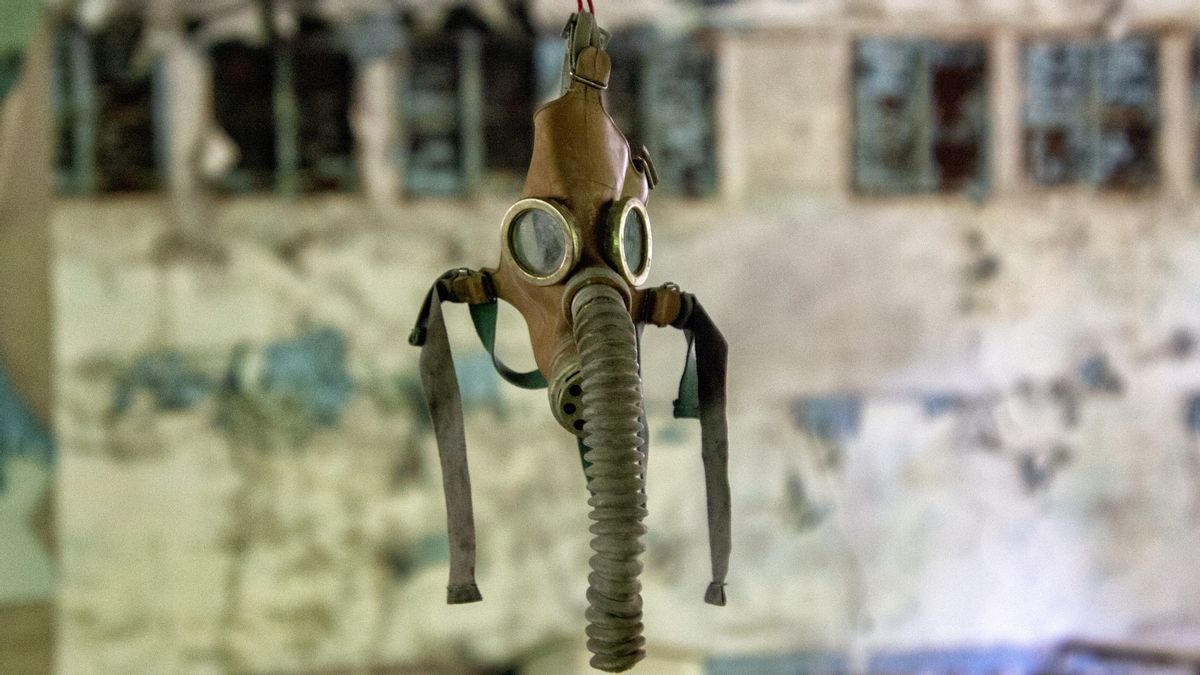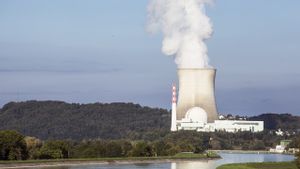JAKARTA - Europe is now really in danger. When the battle for the former site of the Chernobyl power plant in northern Ukraine, Russia finally won.
Now Vladimir Putin's military forces have managed to take control of the Chernobyl power plant, a location with the memory of the worst nuclear disaster in the world. Not only that, but the Russian military also took staff hostage.
"After Russia's completely senseless attack in this direction, it is impossible to say that Chernobyl is safe", said Mykhailo Podolyak, an adviser to the Ukrainian president.
"This is one of the most serious threats to Europe right now", he continued, as quoted by CNN, Friday, February 25.
The White House is furious to learn that Chernobyl has now been captured by Russia. Moreover, it was accompanied by the hostage action of the staff who had been tasked with maintaining and protecting nuclear waste facilities in an area that became one of the most dangerous locations on the planet.
"This unlawful and dangerous hostage-taking, which could disrupt the routine efforts of civil servants required to maintain and protect a nuclear waste facility, is clearly deeply worrying and deeply concerning", White House press secretary Jen Psaki told reporters at a briefing Thursday night.
"We condemn them and we ask for their release", Psaki continued.
Ukrainian President Volodymyr Zelensky is rightly concerned about Russia's success in seizing control of the nuclear plant. And the real threat is not only for Ukraine but also for other neighboring countries.
"In 1986, the world witnessed the biggest technological disaster in Chernobyl. If Russia continues the war, Chernobyl could happen again in 2022", the Ukrainian Foreign Ministry tweeted.
VOIR éGALEMENT:
Chernobyl Nuclear Disaster
On April 26, 1986, a sudden surge of electricity during a test reactor system in Chernobyl, Ukraine destroyed Unit 4 of the nuclear power plant in the former Soviet Union. The accidents and fires that ensued released large amounts of radioactive material into the environment.
The Chernobyl reactor is located in the Pripyat neighborhood, about 65 miles north of Kiev in Ukraine. Built-in the late 1970s on the banks of the Pripyat River, Chernobyl has four reactors, each capable of producing a thousand megawatts of electricity.
On the evening of April 25, 1986, a group of engineers began electrical engineering experiments on the Unit 4 reactor. The engineers, with little knowledge of reactor physics, wanted to see if the reactor's turbine could run an emergency water pump with inertial power.
As part of a poorly designed experiment, engineers disconnected the reactor's emergency safety system and power control system. Next, they compounded this faux pas with a series of errors: the reactor was run at a power level so low that the reaction became unstable, which then gave up too much control of the reactor in an attempt to restart it.

The reactor's output then increased to over 200 megawatts but proved increasingly difficult to control. However, on the morning of April 26 at 1.23 am, the engineers continued their experiments and turned off the turbine engine to see if the inertial spinning would drive the reactor's water pump.
In fact, it's not enough to power the water pump. And without cooling water, the power level in the reactor spikes. To prevent damage, the operator reinserted all 200 control rods into the reactor at once.
The control rods are intended to reduce reaction but have a design flaw. The design error caused a detonation that detonated the heavy steel and concrete cover of the reactor.
It produces steam by an uncontrolled reaction. In the explosions and fires that occur, more than 50 tons of radioactive material is released into the atmosphere, where it is carried away by air currents.
The crash killed 30 operators and firefighters within three months, with several further deaths later. In addition to the operator who died, another person reportedly died at the time from acute radiation syndrome (ARS).
Initially diagnosed on 237 people on the spot and only those involved in cleaning. However, it was confirmed that there were 134 other cases outside the reactor area. Of these, 28 people died from ARS in the weeks following the event.
Meanwhile, 19 more workers later died between 1987 and 2004. But their deaths cannot always be attributed to radiation exposure. In addition to suffering from ARS, some of the exposed people reported developing thyroid cancer.
In addition, there were cancer patients who were children at that time, most likely caused by radioactivity. In addition, large parts of Belarus, Ukraine, Russia, and beyond are polluted to varying degrees.
The English, Chinese, Japanese, Arabic, and French versions are automatically generated by the AI. So there may still be inaccuracies in translating, please always see Indonesian as our main language. (system supported by DigitalSiber.id)













